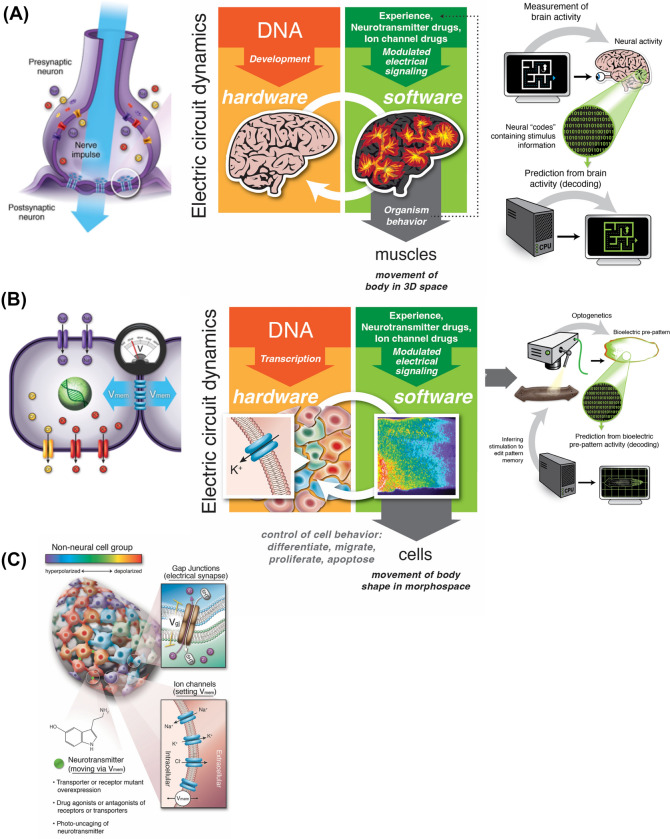Fig. 4.
Developmental and neural bioelectricity: a deep symmetry. A Familiar hardware of neurons consists of ion channels in the membrane which set voltage state, and electrical synapses (gap junctions) which enable those states to selectively propagate through the network. This enables a kind of software phenomenon—physiological events that process information and guide behavior. The effort of neural decoding is the practical implication of the idea that all of the agent’s memories, plans, preferences, behavioral repertoires, etc. are instantiated in that bioelectrical layer of control and will be able to be read out (interpreted) once we understand the encoding. B Exact same architecture is used throughout the body, and forms the evolutionary precursor of the behavioral control system. All cells have ion channels, and most cells couple via regulated gap junctions to their neighbors, enabling the bioelectric physiology that guides growth and form during morphogenesis. Consistent with the evolutionary pivot model, these electrical networks also process information to enable navigation: prior to navigating 3D space by controlling muscle action (when brains appeared), this system was used to process information and make decisions, while bodies navigated anatomical morphospace during embryogenesis, regeneration, and cancer suppression. C This isomorphism between somatic and neural bioelectricity is what enables all of the tools of neuroscience to be used outside of the brain. Developmental bioelectricity is studied by voltage imaging dyes, and functional techniques such as genetic, chemical, and optical ways of regulating ion channels and gap junctions in vivo. The tools (and many concepts) are broadly compatible across tissue types, enabling the insights of behavioral neuroscience to be portable toward understanding outcomes in other problem spaces. All images created by Jeremy Guay of Peregrine Creative and used with permission; A,B taken with permission from (Levin 2022)

